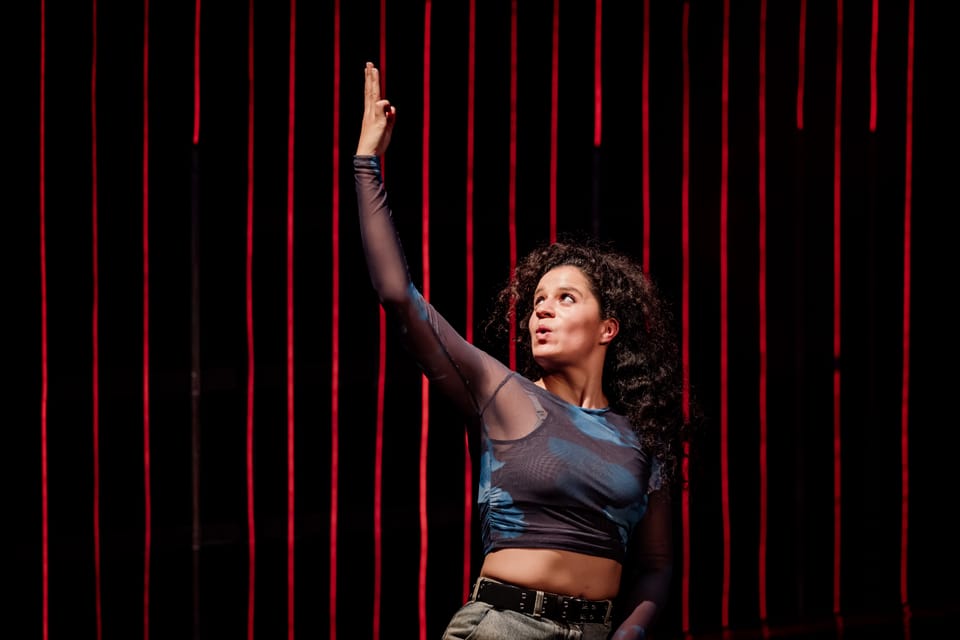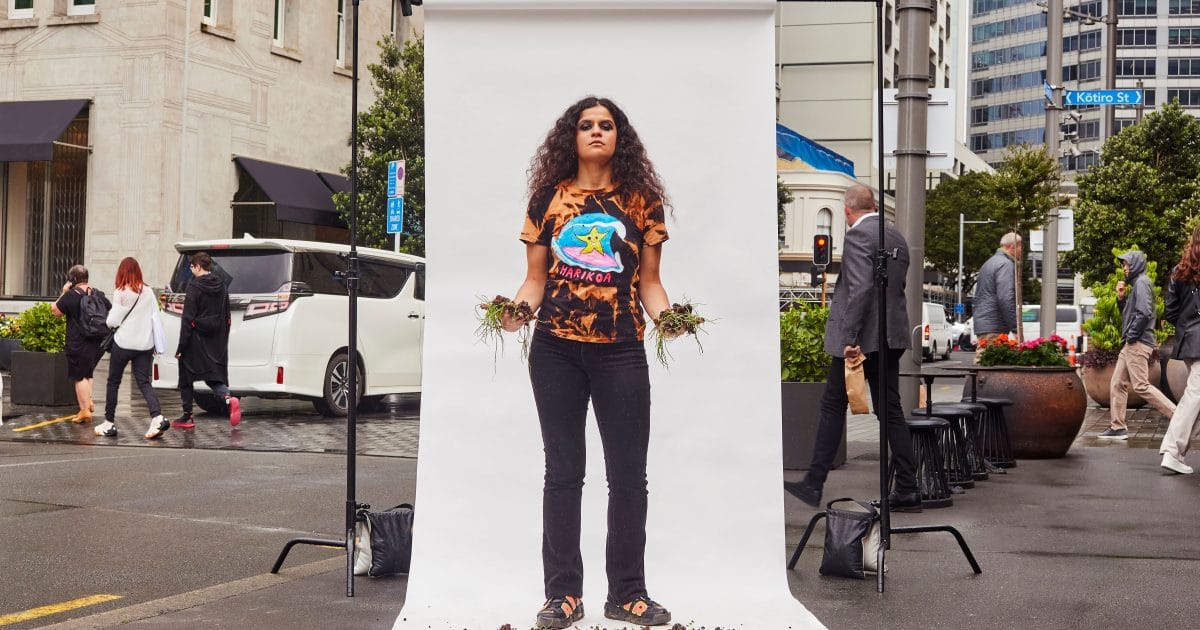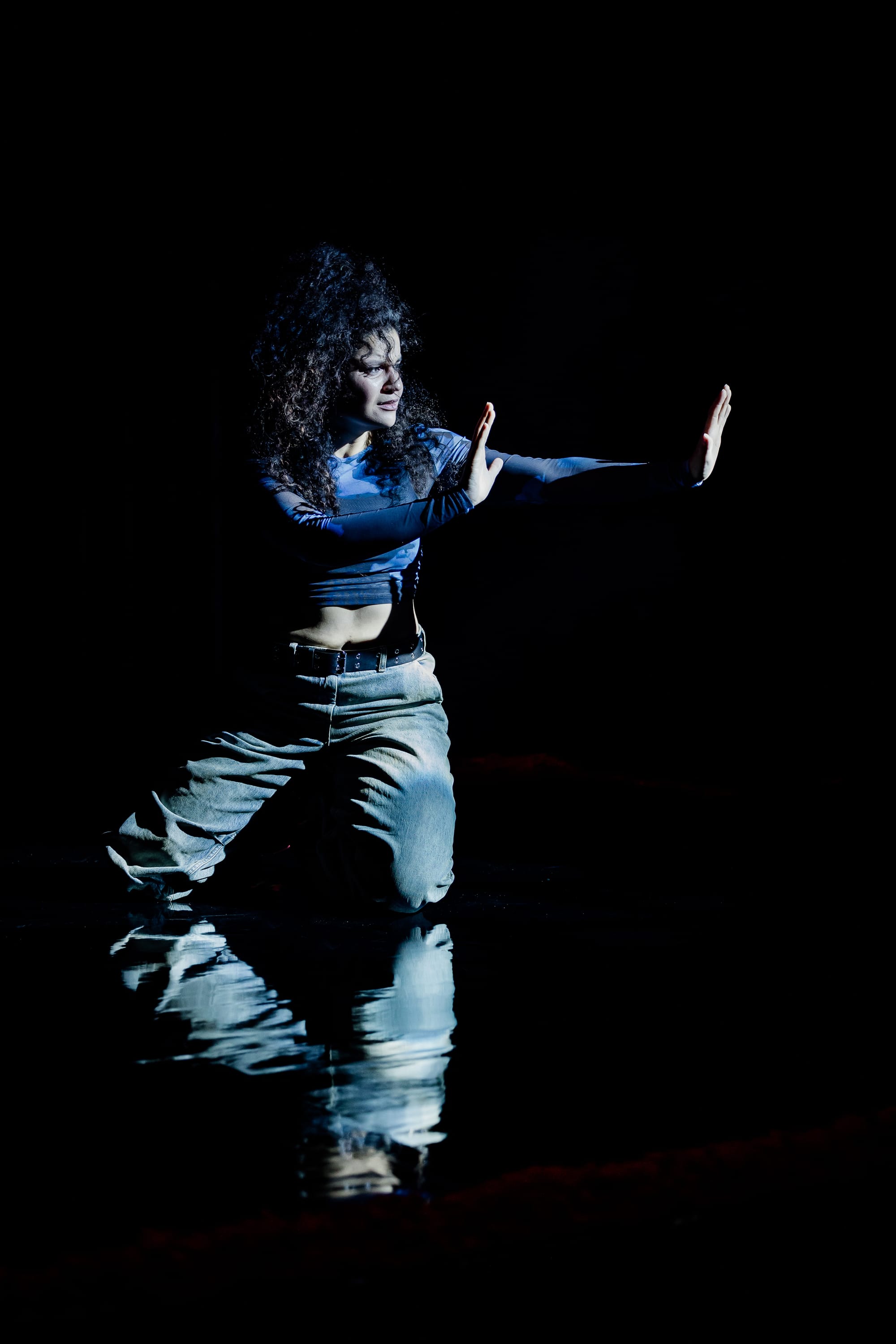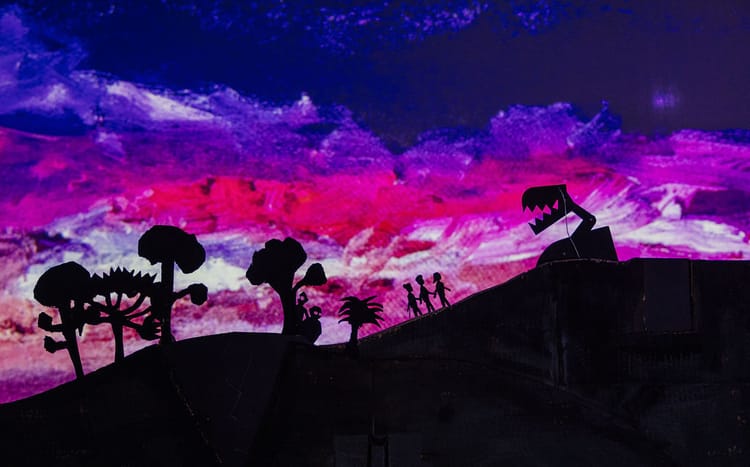It takes a village: The journey of ScatterGun

As ScatterGun: After the Death of Rūaumoko makes its mainstage debut, it exists as the newest in a long line of critically acclaimed and beloved solo work from New Zealand artists. Here is a story of the show’s development – and what makes solo work so special in the first place.
No More Dancing in the Good Room by Chris Parker. Krishnan’s Dairy by Jacob Rajan. Banging Cymbal, Clanging Gong by Jo Randerson. Ngā Pou Wahine by Briar Grace-Smith. The legacy of solo work in Aotearoa is a storied one, from the famous Toi Whakaari solos to one-off seasons at Basement and BATS Theatres to work that has travelled to the other side of the world. Our audiences love a solo show as much as our artists love making them.
However, these shows don’t have simple journeys from an actor’s mind to an audience’s eyes and ears. They take many forms, be they small excerpts at scratch nights, workshops across months and even years around the motu, and Fringe seasons dotted around the very same. On those journeys, many hands pull the show – and its performer – on its way. Directors, designers, technicians, programmers, friends and whanau all have their role to play. ScatterGun: After the Death of Rūaumoko, written and performed by Ana Scotney, is a perfect example of a show that has stepped through many phases, guided by many other artists.
Part of the genesis of ScatterGun was the experience of listening to whaikōrero, an inspiration which lives on in the work to this day. “The ease, the informality of the theatrics on a marae, where you can watch a very gentle kaumatua stand up in track pants, very mellow and unassuming, and be able to weave on the spot,” says Scotney. “That gives me confidence in the simplicity, the gentleness, of what the show can be.” Other inspirations for the show live close to home (Sir Pou Temara) and much further (Federico Garcia Lorca and Dylan Thomas). All three are referred to affectionately by Scotney as uncles.

The first phase of ScatterGun starts, as many great shows of the current day do, at Basement Theatre. Scotney was selected for the venue’s Ideas in Residence programme, a way to support artists to sustainably work and create. “The residency was designed to centre time and relationships as driving factors in taking the very seed of an idea through to its next stage of life, whether that be a first draft of a script or a set of movements towards a dance score,” says Nisha Madhan, an award-winning theatremaker and the venue’s programme manager at the time.
From that residency, Scotney took away the early material she’d developed – just ten minutes worth – and went away to write. The first full version of ScatterGun, took place at the New Zealand Fringe Festival, directed by Stella Reid. She and Scotney had frequently orbited around each other, but only came together to work after a mutual friend passed away.
“Ana and I worked some big, slow hours together exploring the deepest part of ScatterGun,” Reid recalls. “Like how to embody the natural world, how to make a sex scene hot.” This season of the show went on to win two awards at the Fringe, including Outstanding Solo Performance for Scotney.
Eleanor Bishop was Scotney’s dramaturg for the initial development of the work and would go on to direct a version of the show that played in 2022 at Basement Theatre, and further seasons in Sydney, Nelson and Whakatane. She and Scotney had talked a lot during the early phases of the pandemic about capitalism, decolonisation, technology and the nature of debate. “We both shared a question of how to make political work that wasn’t polemic, that gloried in the complexity and contradictions of our country and our culture, both in its humour and its ideas,” Bishop says.

The third director to work on ScatterGun is Sophie Roberts, Silo’s artistic director. Roberts is an accomplished director of solo work, including the critically acclaimed production of I Love You, Bro at Silo Theatre in 2011 and several years of the aforementioned Toi Whakaari solos.
Working with Roberts has allowed Scotney to sink into a deeper process. “There’s the benefit of having precision and specificity around the dramaturgy, but also detailing performance,” Scotney says. “We talk about this being the first time I am doing actressing.”
Solo performance tests what an actor is capable of. To be onstage for an hour without leaving the stage or without dropping the spirit of a show is a feat. To do so while being the only actor on stage, and holding the audience there, is a damn miracle. On a practical level, there’s simply the issue of retaining it all. Not just lines, but blocking, the shifts between certain characters, beat changes and rhythms. Scotney is no exception to these tests, and rises to them with enthusiasm. “There’s also cardiovascular fitness, because Girly likes to chat,” she jokes. “Girly’s out there yarning!”
“There’s nothing onstage except Ana’s body and yet, Ana takes us to multiple worlds and dimensions,” says Roberts.

Sovereignty – who controls the story in a space – is also key to solo work, and why it appeals to so many actors. There is no asking for permission, there is no compromising to another person’s notes, and at the core of it, all an actor needs is their text and an audience to deliver to. In an industry where actors are so often asking for permission to tell stories they might not even believe in, let alone like, it’s easy to see the appeal. “It’s knowing that the intention that you go in with can stay pure all the way through,” Scotney says. “It’s trust. We’ve been really careful with all phases of this, with this particular mahi, to look out for what that sovereignty is.”
Roberts is also conscious that Scotney is not the same person she was when she developed the work back in 2020, or even performed it in 2022. This is the same for all solo work that lives in an actor, and then with an audience, across years. The audiences who saw Krishnan’s Dairy in its final run in 2023 might be seeing the same script, even the same blocking that audiences might have seen in 1998, but the performer, and the context around that performer changes.
“Every time we revisit work or are in a different season of our artistic life, our real life, all of those things inform what the show needs, and what the show needs to adapt to the performer”, says Roberts. “That’s what’s awesome about the show. It’s a living, breathing, organism that can adapt with Ana and whoever Ana’s working with.”
Madhan sees ScatterGun’s mainstage debut as exactly the kind of journey that was intended for participants in the Ideas in Residence programme, which is currently on hiatus. “Basement Theatre helped Ana fertilise this seed, water it, and raise a seedling,” she says. “Now Silo is growing it from seedling to a fully established plant, ready to root itself deeply in the whenua it was written on.”
“Scattergun is me being in lo-fi, off the grid, non-conventional, communities and also me being a pretentious art girly from Pōneke who wants to do some artistic realising,” Scotney says.
That’s the beauty of ScatterGun. It reaches into those generative germs of solo work – an actor in a space, by themselves, forming a character – but also into the heights of what that work can turn into – a performer at the height of their ability, of what the craft is asking of them, reaching out to an audience and asking them to believe in a story. Better yet? Succeeding.
Scattergun: After the Death of Rūaumoko plays at Q Theatre until May 4. This essay was commissioned by Silo Theatre, and can also be read in the printed programme available at the show.





Member discussion